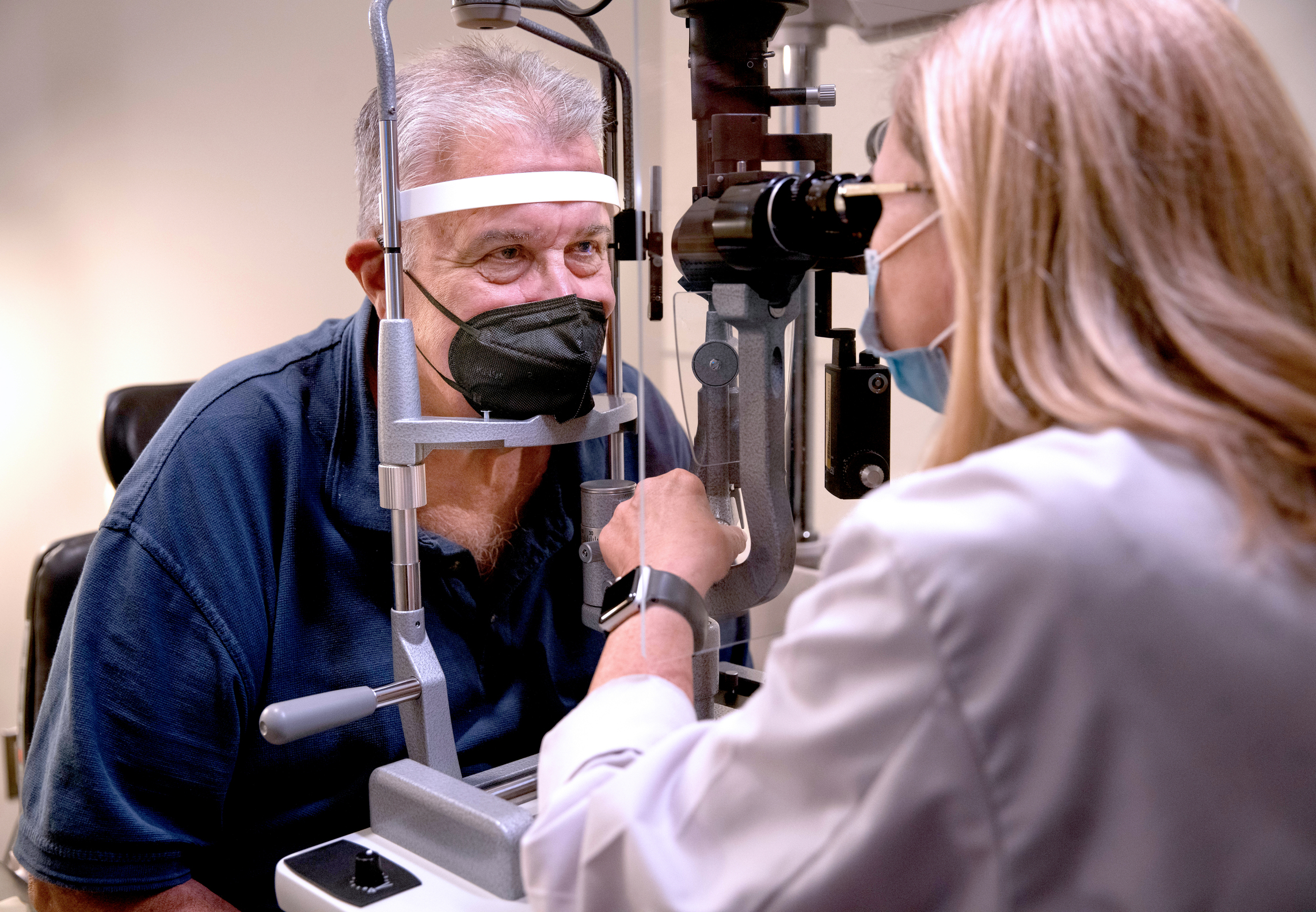
4 minute read
Kellogg Exclusive Site of First Human Trial of Stem Cell Transplant for Dry AMD
Charles Roginski was diagnosed with the dry form of age-related macular degeneration (AMD) decades ago. In recent years, the condition has robbed him of much of his sight.
“I was told there are no treatments for dry AMD,” says Roginski, age 72. “But I wasn’t ready to give up. So I started researching clinical trials.” In 2019, he joined his first clinical study, a pharmaceutical trial conducted at the National Eye Institute (NEI) in Bethesda, Maryland.
That trial had no impact on Roginski’s vision, but he remained committed to participating in research. In February 2022, soon after learning he did not qualify for a different NEI cell therapy trial, Roginski received a call from Pam Campbell, a clinical research coordinator at Kellogg.
“I had spoken with Pam in the past,” he recalls, “and just when I was starting to feel discouraged, she phoned to ask if I was still interested in participating in a study.” Soon after, Roginski traveled from his home near Columbus, Ohio to Ann Arbor to make history.
In May 2022, he became the first patient in the first human trial of a transplant of retinal pigment epithelium (RPE) cells generated from human donor RPE stem cells (RPESCS).
Rajesh C. Rao, M.D., is the Principal Investigator of a Phase 1/2a clinical trial intended solely to evaluate the safety and tolerability of RPESC-derived RPE transplantation as therapy for dry AMD. He plans to enroll 18 patients in the trial, which will evaluate three different cell doses.
The Science Behind the Stem Cells
Dry AMD develops when cells lining the retina called the RPE degrade. The RPE is crucial to nourishing the photoreceptor cells that enable sight. Without a healthy RPE, photoreceptor cells die and vision is lost. One of the most compelling avenues of investigation in the quest for an AMD treatment is to use transplanted RPESCderived RPE to rebuild the layers of the diseased host RPE in the retina. Years of basic research in RPESCs by Sally Temple, Ph.D., and Jeff Stern, M.D., Ph.D., both of the Neural Stem Cell Institute in New York and adjunct faculty at Kellogg, yielded a novel approach to RPESC-derived RPE transplantation. The new method was shown to be effective at rescuing vision in pre-clinical animal models.
“In some trials evaluating therapeutic stem cell transplants, the stem cells are made from a patient’s own skin or blood cells, which are genetically induced to a stem cell that can be coaxed into almost any cell type in the human body—called induced pluripotent stem cells,” explains Dr. Rao. “But Drs. Temple and Stern achieved compelling results in the lab using allogeneic RPE stem cells, which are derived from human donor eye tissue obtained through an eye bank rather than from the patient.”
The stem cells chosen for this application have reached a specific point in their development; they are programmed to become RPE cells, but have not yet fully matured. Following isolation of RPESCs, they are differentiated (matured) to RPE, and these cells are transplanted into an area of the retina where host RPE cells are diseased or have died.
“We are grateful to Charles, and to all the patients who will partner with us in this study,” says Dr. Rao. “With their help, we eventually hope to demonstrate that transplanted stem cells can replace the lost RPE in the human retina, slowing or halting progressive vision loss from degenerative retinal diseases.”
Charles Roginski has very realistic expectations about the trial. “I participate in research because I know the psychological toll vision loss takes, and I want to be part of the solution,” he says. “Of course, I’d like to benefit myself. But if that doesn’t happen, it’s still worthwhile to help other patients down the line.”










